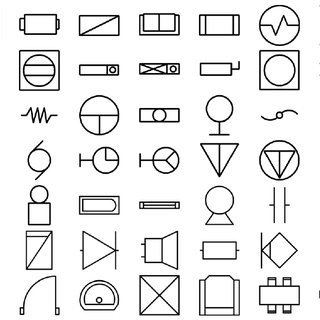
A symbol recognition project involves developing a system that can recognize and interpret symbols from images or other input sources. Here’s a guide to help you get started:
Define Symbol Categories:
- Identify the types of symbols your system will recognize. This could include alphanumeric characters, mathematical symbols, logos, or custom symbols specific to your application.
Data Collection:
- Gather a diverse dataset of images containing the symbols you want to recognize.
- Annotate the dataset with correct labels to use for training.
Data Preprocessing:
- Clean and preprocess the image data. This may involve resizing, normalization, and augmentation to enhance model performance.
Choose Recognition Technique:
- Decide on the recognition technique you’ll use. Common approaches include traditional computer vision techniques, deep learning, or a combination of both.
Traditional Computer Vision:
- If using traditional computer vision, consider techniques like edge detection, contour analysis, and feature extraction.
- Implement algorithms for symbol recognition based on the characteristics of the symbols.
Deep Learning:
- If using deep learning, choose a suitable architecture such as Convolutional Neural Networks (CNNs) for image recognition.
- Train your model on the annotated dataset, using techniques like transfer learning if applicable.
Validation and Testing:
- Split your dataset into training, validation, and testing sets.
- Validate and test your model to ensure it generalizes well to new, unseen data.
Performance Metrics:
- Choose performance metrics for your symbol recognition system. Common metrics include accuracy, precision, recall, and F1 score.
User Interface (Optional):
- Develop a user interface if the symbol recognition is part of a larger application.
- Allow users to input images or symbols and receive recognition results.
Real-Time Recognition (Optional):
- If applicable, optimize your system for real-time recognition.
- Consider the performance trade-offs for speed and accuracy.
Integration:
- Integrate your symbol recognition system into the desired platform or application.
- Ensure compatibility and proper functioning with other components.
Security Considerations:
- If your symbol recognition system deals with sensitive information, implement security measures to protect user data.
Documentation:
- Document your project thoroughly, including the methodology, algorithms used, and any challenges faced during development.
User Feedback:
- Collect feedback from users to improve the accuracy and user experience of your symbol recognition system.
Symbol recognition projects can find applications in various fields, including document processing, image recognition, and augmented reality. Tailor your project to meet the specific needs of your application.
